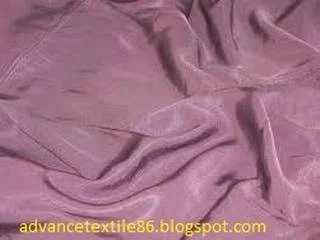Rayon
Rayon
is a regenerated natural fiber that is produced from cellulose fiber. In other
words, rayon is 100% cellulose and has the same chemical composition as the
natural cell. The molecular structure of the rayon is the same as that of
cotton and linen, except that the molecular chains are shorter and do not form
as many tiny crystals. The many types and grades of rayon fibers can imitate
the feel and texture of natural fibers such as silk, wool, cotton, and linen. Rayon fiber is used to make textiles for clothing and other needs.
Rayon is a semi-synthetic fiber made from natural sources of regenerated cellulose, such as wood and related agricultural products. It has the same molecular structure as cellulose and is also called viscose. Those that resemble silk are often called artificial silk.
The fiber is used to make textiles for clothing and other purposes. Rayon production involves solubilizing the cellulose to allow the fibers to be formed into the desired shape. The three most common methods of solubilization are the cuprammonium process, using an ammoniacal solution of copper salts, not currently used; The viscose process, using alkali and carbon sulfide, is currently the most common; and the lyocell process, using amine oxides. The latter avoids the neurotoxic carbon sulfide of the Viscous process but is more expensive.

What is rayon?
Rayon, a versatile and widely used fabric, is a cellulose-based material derived from natural sources. Its unique properties and manufacturing process offer several advantages over other fabrics. Invented in the late 19th century, rayon has become a staple in the textile industry, finding applications in various products such as clothing, home furnishings, and industrial materials.
Rayon is made from regenerated cellulose fibers obtained by chemically treating wood pulp or plant-based sources like bamboo or cotton linters. This process involves dissolving the cellulose in a solution and then extruding it through fine holes to form filaments. The resulting fibers can be spun into yarns and woven into fabrics of different weights and textures.
While possessing several advantages, there are some considerations when using rayon fabric. For instance, although comfortable against the skin, thanks to its smooth texture with minimal static buildup compared to synthetic alternatives, certain types of lower-quality rayons may have decreased resistance against wrinkling or stretching. It is important to note such differences when choosing the appropriate type of rayon for a specific application.
Proper care and maintenance are vital in prolonging any fabric's lifespan. Rayon generally requires delicate handling during washing and may need to be ironed at low temperatures to prevent damage like shrinkage or melting.
Characteristics of Rayon fiber
i. One of the rayon's notable characteristics is its similarity to natural fibers like silk or cotton. Depending on how it's manufactured, rayon can possess qualities ranging from softness and drape similar to silk (known as viscose) to durability akin to cotton (termed high-wet-modulus). This versatility allows for various applications depending on the desired end-use.
ii. The absorbent nature of rayon makes it suitable for warm-weather garments since it can effectively wick away moisture from the body. It also has excellent dye retention properties, enabling vibrant colors without quickly fading. Rayon also tends to have good breathability compared to synthetic materials like polyester or nylon.
iii. Due to its versatility as a fabric and filament-forming material, rayon finds application beyond apparel manufacturing. Its strength when wet makes it ideal for industrial use, such as tire cords or conveyor belts, where durability is crucial even under moist conditions.
History
of rayon fiber
Rayon
fiber is the earliest regenerated fiber, first patented in 1855 by
the Swiss chemist Georges Audemars. It was also called artificial silk. Sir
Joseph Swann, an English chemist, was inspired by Thomas Edison's incandescent
electric lamp to make a filament for electric light and tested the Audemars
cellulose solution for lifting to freeze in a freezing bath. His fibers were
used in Edison's discovery, and in 1885, his wife was in an exhibition of textiles
crushed from his new fiber. Artificial silk was also exhibited at the Paris
Exhibition in 1889 by the French chemist Count Hilaire de Chardonnet, who is known
as the "father of the rayon industry" Because he created the first
plant for the commercial production of intricate net silk in Besancon, France.
Advantages of rayon
1. Rayon is a versatile and widely used fiber.
2. The drape and slipperiness of the rayon are good.
3. Rayon fabrics are soft, smooth, relaxed, comfortable, and absorbent.
4. Stronger and exhibits higher durability and appearance retention.
5. Rayon can be machine-washed.
6. Rayon fibers are naturally very bright.
7. Rayon fiber fabric dyes and prints very well.
8. It has no static or pilling problems
9. It can be easily blended with other fibers to reduce production costs.
Disadvantages
of rayon
1. Highly toxic carbon disulfide is used
in the production of rayon.
2. Rates of disability in modern factories are not known.
3. The more water-repellent the rayon-based fabric, the more
slowly it will decompose.
4. Rayon is weak when wet.
5. Recommended care for regular viscose rayon is dry-cleaning
only.
6. It wrinkles easily unless treated and has low resiliency power.
7. It has low wet strength and is unstable when wet.
8. Tumble dry on a warm setting and remove immediately or while slightly damp. Otherwise, the fabric can be damaged.
Conclusion
Overall, rayon stands as a versatile fabric with various applications across industries. Its ability to mimic natural fibers while offering unique properties makes it a preferred choice for designers and consumers. Whether used in fashion garments, home textiles, or industrial materials, rayon contributes significantly to the textile industry's diverse range of options available today. The future of rayon fabric is so bright. There is a growing demand for rayon worldwide, and many new technologies promise to make rayon even better and cheaper. Today, there is
a strong trend toward blended fabrics. Blends offer the best of both worlds.










0 Comments